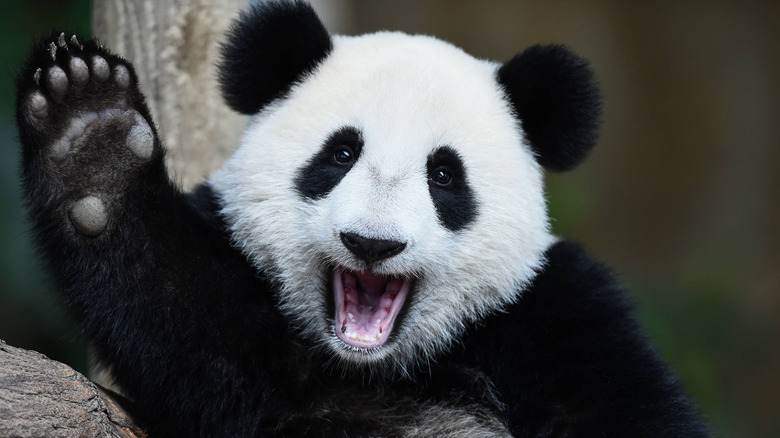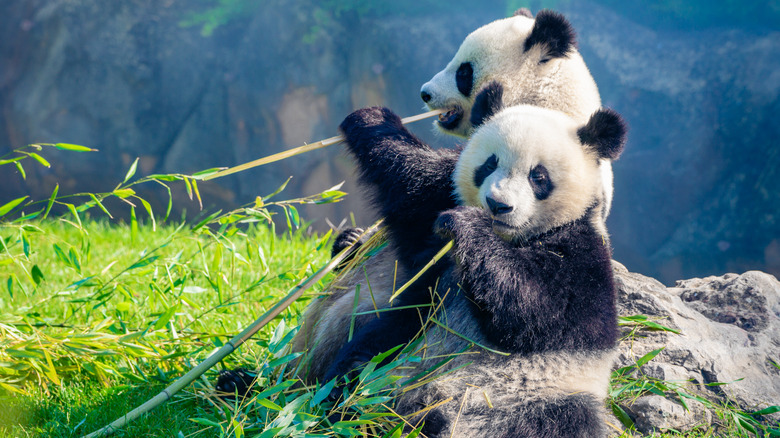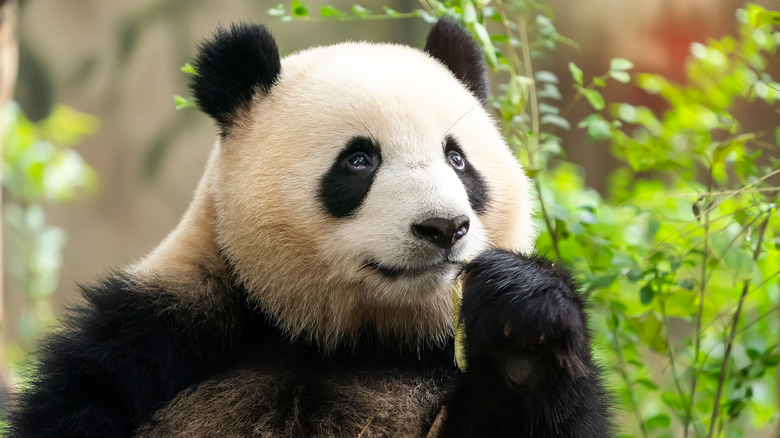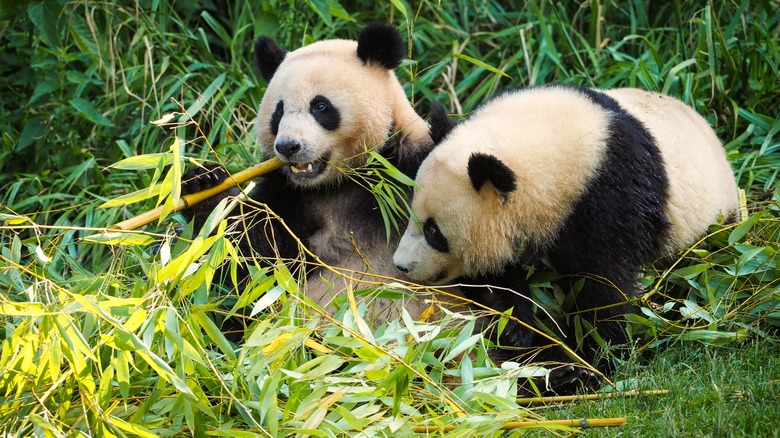The Gross But Effective Way Pandas Survive In The Cold
The temperature on Earth can be a real mixed bag. According to Guinness World Records, July 10 1913 marked the most intense heat ever recorded on the planet: 56.7 degrees Celsius (approximately 134.6 degrees Fahrenheit), on one particularly scorching day in the aptly named Death Valley in California. On the other end of the thermometer, per National Geographic, an air temperature of minus 128.6 degrees Fahrenheit (around minus 89.2 degrees Celsius) was recorded in Antarctica 70 years later.
Elsewhere in the solar system, either of these extremes would be considered rookie numbers. What this means, then, is that humankind and all of its fellow creatures can live here, but need to be wary of both the extremes of heat and cold they will experience.
Needless to say, species have had to adapt to their environments. Some of these adaptations make perfect sense. The fennec fox is able to deal with the heat of its desert home with aid from the likes of its iconic ears, which help the adorable little animal with heat regulation. Other survival techniques are rather more unconventional. The panda, for instance, appears to have a distinctly poopy trick to help itself manage the cold.
A magnificent (if poopy) animal
Millions of us around the world have a natural affinity for pandas. Their monochrome color palette makes them look uniquely adorable, and they're just fascinating case studies all around. The emblematic animals are the globally-recognized furry face of the World Wildlife Fund. "When WWF was first founded in 1961, a giant panda living at the London Zoo inspired our simple black and white logo — an icon that has since evolved into a rallying symbol of global conservation," the organization's official website proudly states.
There are a lot of fascinating things to know about pandas. You're probably aware, for instance, that they are very picky yet ravenous eaters, consuming up to 84 pounds of their beloved bamboo on a daily basis. Even more interestingly (and much more disgustingly), they could well be the animal kingdom's biggest fans of horse poop.
Yes, giant pandas adore rolling in manure — horse specifically. Why? It seems that there could be very particular chemicals in the dung that stop the pandas from feeling quite so cold.
Explaining the behavior
In December 2020, Proceedings of the National Academy of Sciences published the study, "Why wild giant pandas frequently roll in horse manure," by Wenliang Zhou et al. As the title suggests, the research dove straight into the heart of the foul-smelling topic at hand.
"Attraction to feces in wild mammalian species is extremely rare," the authors begin, and anyone who's raised a baby (and not exclusively human ones either) can probably attest to that. "Gross" and "germy" would probably be some of the first words that spring to mind. Giant pandas, the scientists report, can even go to great pains to ensure that they smear it all over themselves. "The frequency of HMR events was highly correlated with an ambient temperature lower than 15°C," the authors note. This seemed to suggest two things: the fantastic concept that there's a scientific acronym for Horse Manure Rolling, and that this behavior seemed to be connected to a desire to feel warmer.
Over a period of almost a year from July 2016, the study states, panda behaviors were recorded via cameras in their habitats. A whopping 38 occasions of HMR were recorded, lasting up to 499 seconds. That may not sound like a long time, but if you're covered in horse poop, it's a very long time indeed. The authors characterized this behavior as "1) carefully sniffing; 2) rubbing against the horse manure with cheek; 3) rolling in the horse manure; 4) smearing the horse manure over the whole body."
An unconventional strategy
As to what influenced these behaviors, the Proceedings of the National Academy of Sciences study goes on to note that "fresh horse manure ... exhibited a strong attraction for pandas." What's significant about this is that the sesquiterpenes caryophyllene oxide and beta-caryophyllene are particularly strong in such manure. After all, you wouldn't want it to have been sitting out for a long time (that would make it gross).
The fact that the vast majority of these behaviors among the Qinling pandas took place during cold periods (and not at all when it was warmer) indicates a connection between these specific chemicals and the cold. The authors concluded, then, that the pandas perhaps felt more resistant to the cold (if not directly feeling warmer) when embracing these chemicals.
While more study on the subject is necessary, it's already well-known that pandas arm themselves against the cold in unique ways. "They have a really dense, wooly coat that sheds moisture and is thick and insulating," Oklahoma City Zoo's Rebecca Snyder said, per Nature. Horse poop may be just another foul tool in their arsenal. Unlike other bear species, they don't hibernate in the winter, so improvisation seems key.



